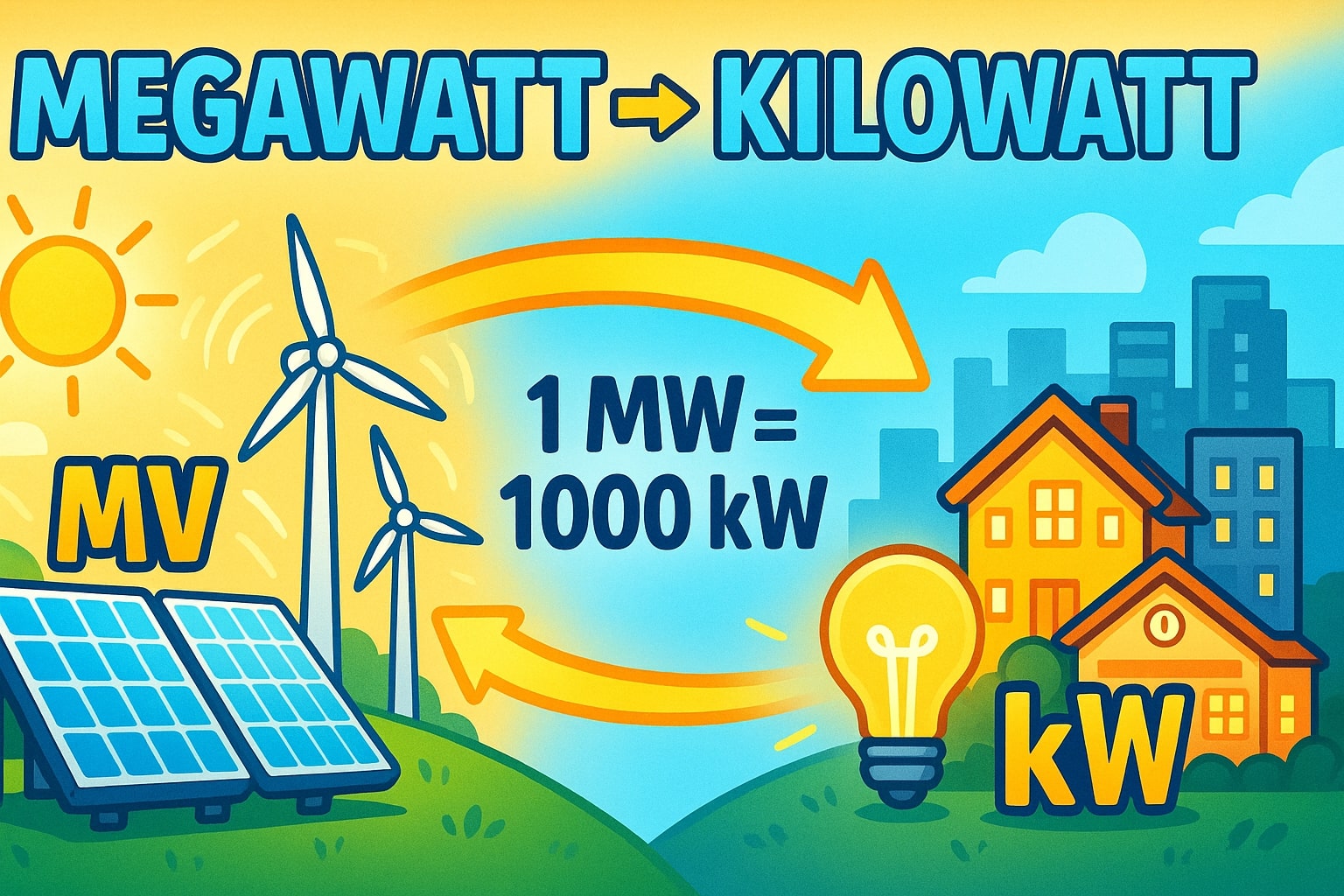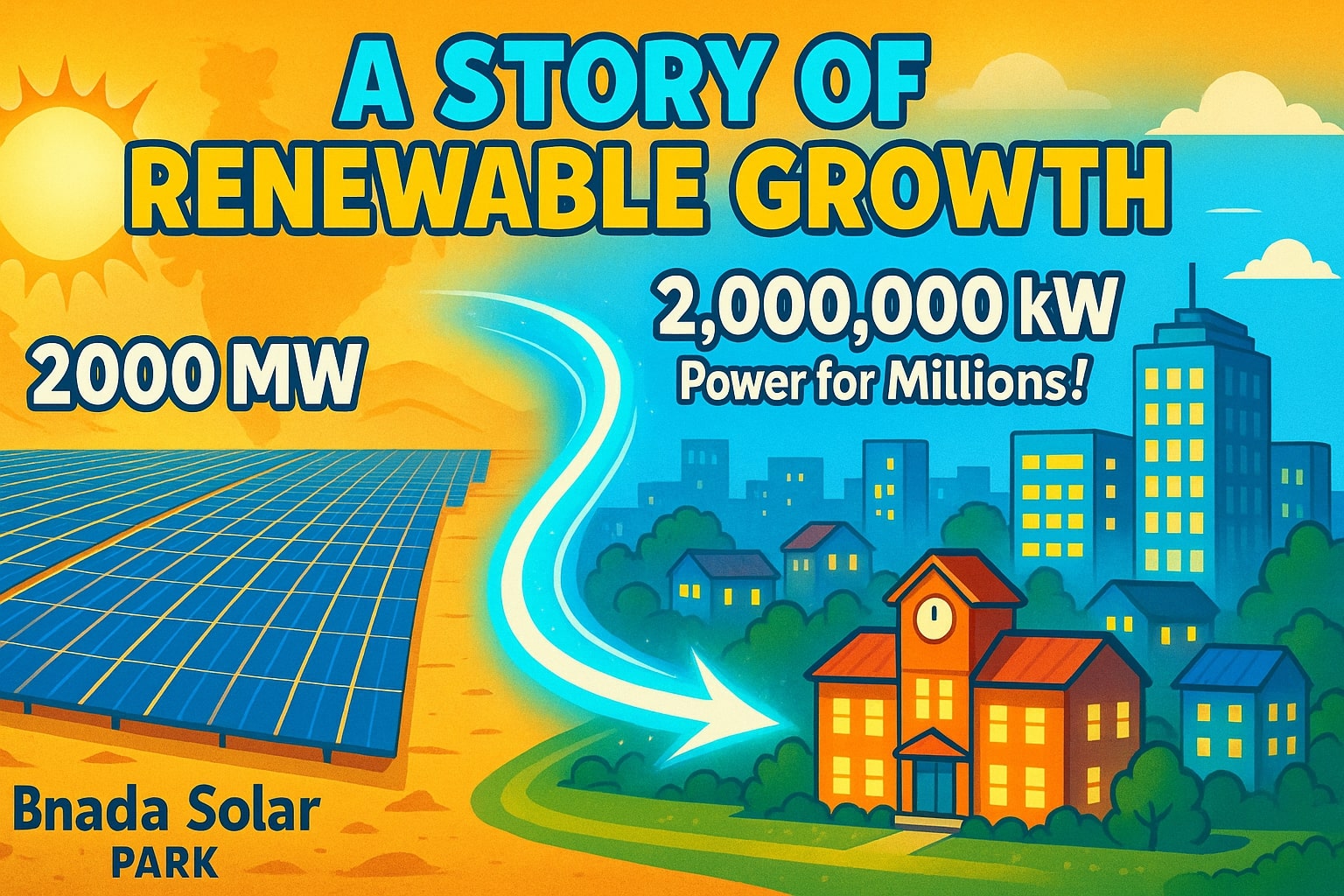megawatt to kilowatt (MW to kW) - How to convert MW to kW
Converting megawatt to kilowatt is crucial in energy, engineering, and power generation industries. Megawatts (MW) measure massive production capacities, while kilowatts (kW) bring that scale down to the household or device level. With the right formula, you can easily move between the two.

What is a Megawatt?
The megawatt (MW) is a unit of power equal to 1 000 000 W. It is typically used to express the output of power plants, wind farms, or even entire cities’ electricity demands. For example, a modern offshore wind turbine can generate around 12 MW, enough to power thousands of homes.
What is a Kilowatt?
The kilowatt (kW) is equal to 1000 W. It is widely used in residential, commercial, and industrial contexts to measure power consumption and generation on a smaller scale. An electric vehicle charger may provide 7 kW, while a household might consume 3–5 kW during peak use.
Formula: Convert MW to kW
The conversion is simple because both units are based on watts:
1 MW = 1000 kW
Example:
If a solar plant produces 5 MW, then:
5 × 1000 = 5000 kW
This makes it easy to understand how large-scale generation translates into real-world energy consumption.
Step-by-Step Conversion
-
Identify the number of megawatts.
-
Multiply by 1000.
-
The result is in kilowatts.
For instant and accurate results, you can use our Conversion Tools, which cover megawatts, kilowatts, and many other power units.
Did you know?
-
The Hoover Dam on the Colorado River has a capacity of over 2000 MW, which equals 2 000 000 kW.
-
A single megawatt of solar power can supply around 150–200 homes with electricity.
-
In pop culture, the film Back to the Future made “1.21 gigawatts” famous, showing how large power numbers capture public imagination.
-
Kilowatts remain the most relatable unit for households, as utility bills usually measure consumption in kilowatt-hours (kWh).
From Mega Projects to Household Power: A Story of Renewable Growth
In recent decades, renewable energy has transformed how societies think about electricity. Take the example of Bhadla Solar Park in India, one of the largest in the world, with a capacity of over 2000 MW. On paper, this number looks massive, but when converted, it equals 2 000 000 kW—making it easier to grasp how many homes it can actually support.
This solar park alone provides enough energy to power millions of households, showing how the scale of megawatts translates into kilowatts for families, schools, and businesses. The story of renewable mega-projects illustrates the importance of simple conversions: bridging the gap between the impressive size of energy infrastructure and the practical needs of everyday life.

Turning Big Numbers into Daily Impact
Accurate conversions matter not only for engineers but also for policymakers, students, and homeowners interested in renewable energy. Alongside megawatt to kilowatt, our Power Converter handles a wide range of energy units, from milliwatts to gigawatts. Combined with the all-in-one Conversion Tools, these resources ensure you can switch between scales seamlessly.
The conversion from megawatt to kilowatt (MW to kW) is as simple as multiplying by 1000, but the implications reach far beyond the math. Megawatts describe the capacity of power stations and national grids, while kilowatts connect that energy to daily life. With Jetcalculator, you can move confidently between these scales and apply them in real-world contexts—from evaluating clean energy projects to managing home consumption.

